As Arizona builds to solve a housing crisis, will its homes withstand future heat extremes?
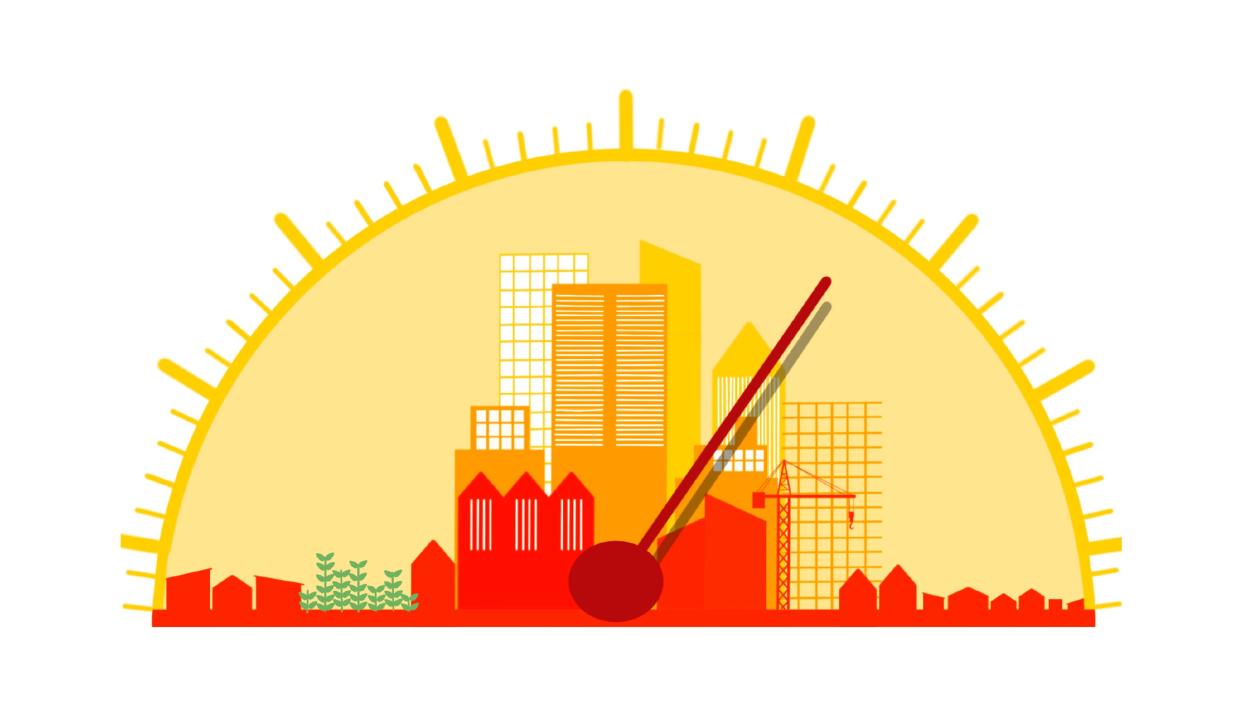
Arizona's heat and housing crisis:
Statewide | Metro Phoenix | Farmworker housing (coming soon) | Building on the reservation (coming soon) | Solutions (coming soon) | Map
Warm and steady, Arizona is famous for its climate.
Here, blazing blue skies, statuesque saguaros and temperatures that much of the year feel like the embrace of a heated blanket combine with business-friendly politics, swanky golf destinations and the second-most popular U.S. national park to fuel a blistering population growth rate of 13% since 2010. The state boasts four of the top 10 sunniest cities in America and five of its fastest-growing. Many of the 1 million new residents hail it all as a cause for celebration.
But the state’s popularity isn’t all that is blistering. In summer, that blanket’s embrace tightens amid temperatures that can exceed 120 degrees. Increasingly, new and longtime residents find themselves woefully unprepared.
As home to America’s hottest big city, many of its highest temperature records and a July 2023 heat wave that made international headlines — leading some to question when Phoenix will become unlivable — the Grand Canyon State is on the domestic frontlines of the climate crisis.
With a shortage of 270,000 housing units according to the latest estimate from the Arizona Department of Housing, it is also a front-runner in the nationwide housing crisis.
Combined, these two crises are lethal. In 2022, 425 people died from heat-related illness in Maricopa County, the state’s most populous central area. An estimated 42% of them were unhoused, some newly so, forced by rising rents and competition for shelter to endure summer temperatures that often fail to drop below 90 degrees at night. Others, many of them poor or elderly, succumb to heat each year while inside homes with insufficient cooling.
Solutions to these dual crises exist but are typically considered separately. The officials designing shade structures and community heat relief programs are not often in the same rooms as those signing deals for new residential developments.
Geography is also a concern. While construction sprawls across metro Phoenix, housing projects are lacking in some outlying parts of Arizona with the greatest vulnerability. In Yuma near the border with Mexico, many farmworkers labor outdoors in extreme heat only to return to cramped mobile homes that offer little refuge. At the opposite corner of the state, the Navajo Nation was hit hard by COVID-19 in part because of overcrowded housing, yet residents face difficulty obtaining permits to build.
After 32 years of law enforcement and social work for the tribe in Tuba City, Dorothy Deal retired five years ago and came home to the plot of land on the Navajo Nation where her parents raised her and her siblings.
“I always wanted to come home,” Deal said. “We went away for jobs and schools but I always wanted to come back.”
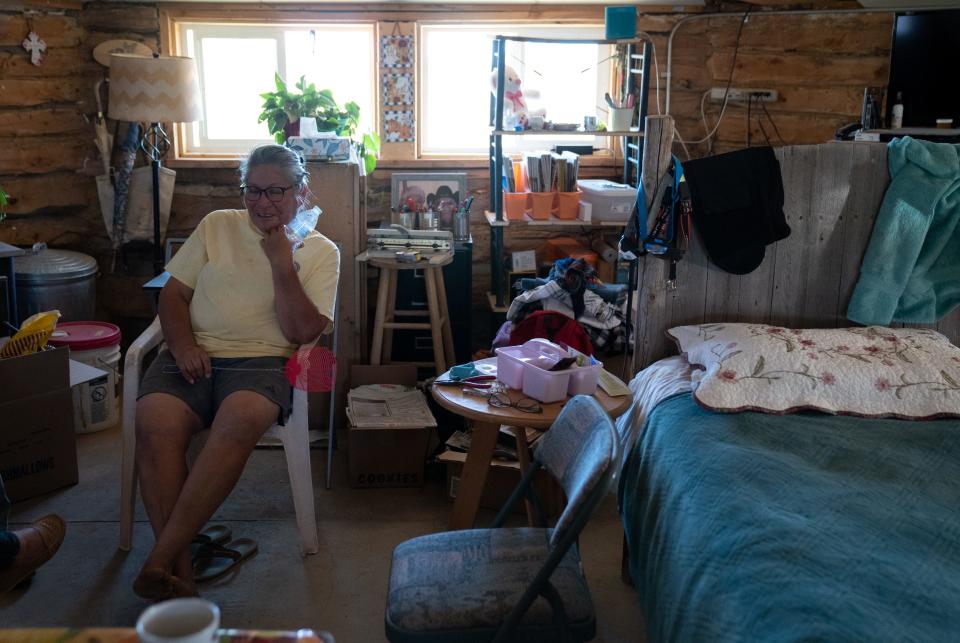
For now, she lives in a traditional hogan — a small, round, one-room structure made of wood and packed mud — and spends her days tending her 16 sheep, including two males named Willie Nelson and Snoop Dogg. She has electricity but no running water, so she hauls water for herself and the animals from a nearby filling station.
She’s been trying for years to line up the permits and survey work to build a more comfortable home nearby, ideally with an indoor bathroom, where she thinks her sons and grandchildren would be more likely to visit her. While she waits, she volunteers with a local Community Land Use and Planning Committee to help facilitate progress.
“Right now we know that housing is a big, huge need,” she said. “There’s no new houses. But the original homes are no longer there. It’s tough living out here.”
Specific housing needs vary across the state. But as the temperature dial cranks up, the threats are shared.
How, what and where Arizona chooses to build right now will lock in its degree of vulnerability to a warming, drying world. The average lifespan of a new home — there were 82,000 in the Phoenix area over the last three years — is 70 to 100 years. During that time, scientists expect average annual temperatures in the Southwest to increase by 3.5-9.5 degrees Fahrenheit and heat waves to become more frequent and extreme.
Each extra day of extreme heat in a month could result in an estimated seven additional deaths for every 10 million people nationwide, research has found. A majority of those who suffer that fate will be members of underserved groups including Indigenous, Hispanic, low income, elderly and the unhoused.
Many will be Arizonans.
A state at a crossroads
In 2023, Arizona is in the midst of constructing its climate future. Facing broken heat records and a homeless population that has increased 72% in some areas since 2017, the state stands at a crossroads: Build fast to solve the housing crisis or build smart to address the climate crisis.
Obstacles abound. Water shortages on the Colorado River, exacerbated by climate change, have prompted cuts to Arizona’s allocation that are sparking renewed concerns about the longevity of local supplies. In June, Gov. Katie Hobbs announced that the state’s water agency will stop approving new development that relies solely on groundwater in outlying parts of metro Phoenix.
But there are also opportunities, many already in blueprints and hardware stores, to build in ways that require less water, less energy, less land disturbance and that generate less heat. In their latest report on climate change mitigation opportunities, the scientist members of the Intergovernmental Panel on Climate Change named urban development as one of the areas of greatest potential for climate course correction.
Some of those solutions are being devised by the state’s own researchers. Arizona State University is an internationally recognized hub of innovation in sustainable development. The state has an active chapter of the U.S. Green Building Council and some climate-friendly housing projects that are held up as examples elsewhere in the country.
But this knowledge doesn’t always make it into local building design and construction practices. When it does, it’s at a trickle, with environmentally minded developers opting to take on small sustainability projects for niche markets in wealthy areas, those least likely to be exposed to the climate impacts of poorly constructed buildings. It takes decades to shift the status quo — time that Arizona cannot afford.
Building sustainably doesn’t necessarily take longer once the project is approved, said Solange Whitehead, a Scottsdale City Councilmember who spent three years pushing to include green mandates in Scottsdale’s building code, which has become one of the most progressive in the nation. But it takes a long time, a lot of meetings and sometimes new legislation to upend conventional expectations.
“There’s a lot of inertia in the way we approach (development) in cities," said Diane Pataki, a professor at Arizona State University who studies the role of nature and green space in urban sustainability. "We know there are better ways, but we still tend to do the same things, build buildings and plant trees in the same way. That whole approach needs to change."
Set in stone: Taking the temperature of Arizona’s existing housing stock
To determine what stones Arizona has already set in place and what changes are needed, The Arizona Republic, with support from the Massachusetts Institute of Technology’s Environmental Solutions Initiative, spent months digging into the status of housing construction in Arizona and investigating what kind of climate future the state is building and for whom.
First, the climate positives. According to data from the U.S. Census Bureau, Arizona added more than 270,000 housing units between 2010 and 2020. Combined with the 711,000 units built over the prior decade before the recession, that means 32% of homes in this relatively young state were built after 2000.
Nationwide, the median home build year is 1979. Since homes in Arizona are, on average, 12 years younger, their construction has benefitted from the expanded availability of amenities like home solar panels as well as updates to standards set by the International Code Council. Released every three years, each new version of these building codes typically improves on sustainability considerations such as water and energy efficiency.
But adoption of these updates has been spotty. Arizona is one of a minority of states that does not have a statewide building code. Requirements are instead left up to local jurisdictions.
The Republic, with support from the MIT ESI, conducted an independent review of building codes, procuring and reading documents from 40 key Arizona municipalities and scoring them based on various sustainability measures to attain a rough metric reflecting the statewide status of climate-friendly residential construction.
Results show that only five of 40 cities require builders to follow the latest 2021 International Code Council standards, while 28 more adhere to the 2018 version. The rest are further behind, with the community of Kayenta on the Navajo Nation as well as the Maricopa County town of Gila Bend still operating according to 2006 ICC standards, though both indicate they are working to update their codes.
Cities that don’t require efficiency in their codes still benefit from improvements in appliances and materials over time, automatically baking progress into newer construction. But with temperatures rising and reservoirs dropping ever faster, the climate suitability of Arizona’s homes is falling behind.
Sheltering in place: Homes as havens from the heat
As heat waves grow more deadly, resilience of the spaces where Arizonans take shelter becomes critical.
“The story of insulation is the story of energy codes,” said Curt Rich, president and CEO of the North American Insulation Manufacturers Association. “The only reason why builders put insulation in a home is because energy codes require them to. Prior to 1980, there were no energy codes. So most homes in the United States don't have any insulation at all and most existing homes in Arizona are going to be under-insulated.”
Recognizing the need for home improvements to protect against intensifying heat, the Arizona Department of Housing appealed to the federal government in early 2023 and secured $47.5 million for home weatherization assistance. The program will install insulation, seal leaks and improve home energy efficiency for an estimated 3,400 low-income applicants.
One recipient of these services, 72-year-old Shirley Moore, was struggling to balance the cost of her prescriptions against utility bills that could run $200 per month during summer in her 1938 Coolidge home. Upgrades to her home’s insulation and vents finally enabled her and her 13-year-old shih tzu, SugarBabe, to relax at a comfortable indoor temperature without skimping on her medication.
But for every Shirley Moore who gets an insulation upgrade, there are many more elderly Arizonans and low-income families still sweating it out in homes ill-equipped for modern heat extremes. Caryn Potter, the local representative for the Southwest Energy Efficiency Project, said that the need for home retrofits in Arizona extends far beyond what this funding will cover.
“A huge part of energy efficiency work is home performance,” Potter said. “Every time a city adopts a new code, they’re getting some energy efficiency. But also, weatherization has had a huge impact in terms of our response to dealing with climate change and doing that in a way that’s cost effective.”
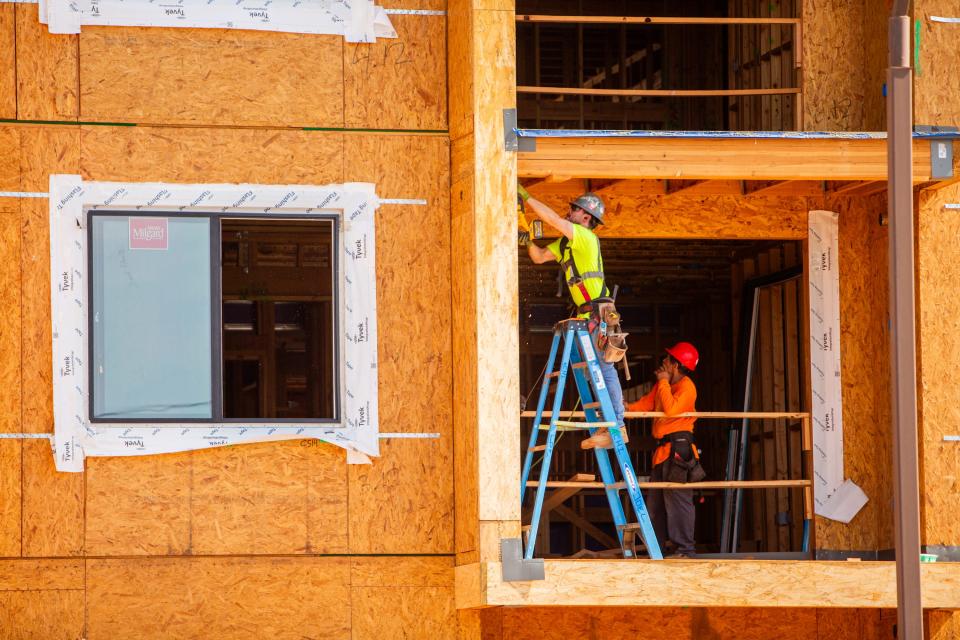
About 6% of the electricity produced in the U.S. — most of which is from fossil fuels that contribute to global warming — goes to power air conditioners, according to the Department of Energy. As they work to cool, air conditioners also warm the atmosphere by releasing refrigerants and other chemicals known to be powerful greenhouse gases. At the same time, AC units contribute directly to urban heat by dumping hot air out into neighborhoods, which one study in Arizona found warmed surroundings by nearly 2 degrees Fahrenheit.
The risk that increasing energy demand for space cooling could trigger dangerous power outages on hot days is a real concern of the International Energy Agency that is already playing out in Arizona: Thousands of residents in both Mesa and Chandler lost power during a July 2023 heat wave. A recent study estimated that a blackout lasting five days in AC-dependent Phoenix could kill more than 13,000 people.
Expanding renewable energy infrastructure could save lives and fight global warming, studies suggest, by serving as a cleaner and backup source of power for AC units on hot days.
But while opportunities in green energy development have expanded, experts say the state is still a long way from being on track with rooftop solar. Renewables make up only 14% of in-state energy generation compared to a nationwide average of 25%, despite the U.S. Energy Information Administration ranking Arizona second in solar energy potential. Solar advocates blame Arizona's investor-owned electric utility companies for politically blocking renewable energy projects and for charging fees for rooftop solar that cut into homeowner incentives.
“We in Arizona are behind most of our neighboring states when it comes to renewable energy standards,” said Troy Rule, a professor of law at ASU who specializes in renewable energy policy. “If you ask voters whether they support renewables, generally there’s pretty high support for that, but we haven’t seen that play out in our policies. So that's a sign that our system’s not working very well.”
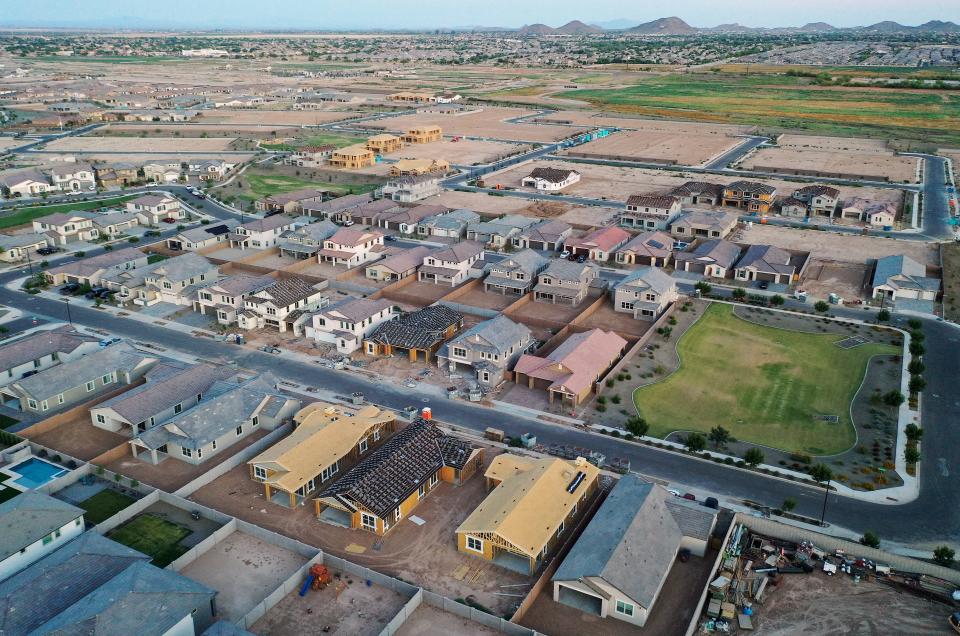
What kind of future are we building?
Building homes in 2023 that come stock with rooftop solar and electric vehicle charging options, that feature the latest in insulation and energy efficiency, and that house more people while minimizing warming would help avert future headaches over expensive retrofits and natural disaster resilience.
But to what extent is Arizona doing that?
Between 2010 and 2020, Queen Creek in Maricopa County gained 11,000 homes, expanding its housing availability by 129%. But it did so largely in a way that the Arizona governor deemed unsustainable in her June announcement of a building moratorium based on water concerns. Buckeye, the other municipality directly affected by Hobbs’ order, grew by 12,600 units — mostly single-family homes — between 2010 and 2020, a 69% increase.
The Republic’s analysis of building codes indicates that Queen Creek and Buckeye have adopted some of the most climate-aware home construction requirements in the state. Queen Creek has approved additional safeguards against wildfire risk and Buckeye’s code considers wildlife corridors, sustainable materials and native vegetation. Scottsdale, which grew 10% by more than 12,000 units between 2010 and 2020, now requires electric vehicle infrastructure in its green building code.
But if Queen Creek and Buckeye don’t have reliable sources of water to continue apace, it matters little how sustainable their building codes are. And Scottsdale, according to Solange Whitehead, is nearly built out.
When considering the dual climate and housing crises, solutions lie not only in how developers build but also in where and what they build. Multifamily units, such as duplexes and apartment buildings, that are near employment centers are some of the best options to get more people housed with lower environmental impact, experts say. Unlike single-family detached homes, which result in up to 15 times the greenhouse gas emissions according to a 2020 study, multifamily housing saves resources by sharing yards, roofs, external walls, air conditioning and utility infrastructure. The 2022 United Nations Emissions Gap Report considers minimizing unnecessary floor space per person a promising climate solution.
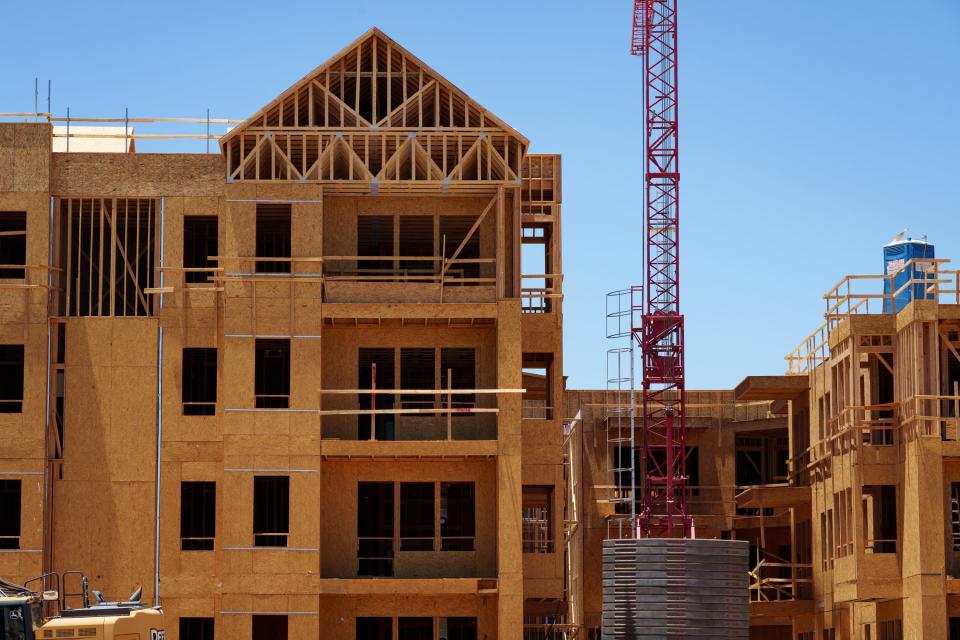
Yet multifamily development frequently faces opposition from those in power. ASU politics professor and housing expert Paul Lewis studies how wealthy residents contribute to regional housing problems.
Lewis says “NIMBY” or “Not in My Backyard” efforts to block construction of apartments and other multifamily units frequently exclude lower-income residents from safe neighborhoods with good schools and reasonable commutes to work. As a result, struggling families can end up homeless, in inadequate structures or forced to drive farther for employment and basic needs, contributing to transportation emissions in a direct crossover between the housing and climate crises.
In Arizona, a land of many well-off retirees, golfers and snowbirds, NIMBY obstructions to affordable, multifamily developments are aplenty. Last year, residents of Surprise, a Phoenix suburb with many upscale retirement homes, sued their city over a proposal to add 600 units for low-income individuals, families and seniors.
Earlier this year, in what reporting by The Republic called “one of the most controversial issues that the city has seen in recent memory,” residents of Chandler, south of Phoenix, protested an affordable housing project that would add 500 units. And as of late 2021, fast-growing Buckeye hadn’t built a single multifamily unit in a decade despite attempts to locate affordable housing projects there.
“Building greater densities around meaningful nodes where people can transact and do some of the things they need to do in their daily rounds, shopping and working, etc., that seems to be more sustainable,” Lewis said.
“The question for Phoenix now that it has become a more mature area is, ‘Can we turn our attention back inward to not only the type of development but the quality of life and public services in the parts of the metropolis that were built up decades ago, for example, around light rail stations?’”
Zoning regulations have also been an obstacle to building denser, more sustainable housing, since some cities designate land specifically for single-family homes in processes that can be time-consuming and hard to change.
David Hovey Jr., an architect and sustainable housing developer with Optima, which has projects across the Phoenix area, said that height restrictions for buildings — like those introduced in 2021 in Scottsdale — force housing to sprawl and take up open space. Paving over more land than necessary raises temperatures in what is known as the urban heat island effect.
In the 2022 legislative session, state Sen. Steve Kaiser, R-Phoenix, introduced a bill aimed at loosening rezoning processes to help open up more land for development and address the housing crisis. It was amended to designate a “housing supply study committee” instead.
In 2023, he tried to address zoning again with a similar bill. But after opposition from municipalities and neighborhood advocates, state lawmakers rejected it in favor of leaving final zoning decisions up to cities. Kaiser resigned from the Legislature in June, citing family reasons.
To estimate the effects of such restrictions on building in the state, The Republic reviewed the latest census data and found that Arizona lags behind nationwide percentages in every type of housing unit that is more sustainable to build and power, from duplexes (1% of units in Arizona versus 4% nationwide) to apartment complexes with 20 or more units (8% in Arizona versus 10% nationwide).
Arizona exceeds national averages in only two housing categories: less sustainable single-family detached homes (64% of units in Arizona versus 61% nationwide) and mobile homes, the type of shelter least equipped to handle extreme heat (10% in Arizona versus 6% nationwide).
Maricopa County has recently started building more multifamily structures, despite NIMBY objections. The Maricopa Association of Governments reported nearly 3,000 more apartment units were completed in 2022 than in previous years.
But sprawl still dominates Arizona’s construction landscape.
The Republic analyzed changes in the prevalence of each county’s housing types between 2011 and 2021 using census estimates (which can differ from local numbers). Despite Phoenix’s apartment frenzy, Maricopa County still added three times more single-family detached homes than housing units in larger, multifamily complexes over the last decade.
In other parts of Arizona, the contrast is more stark. Across Pima County, where Tucson is located, the number of single-family detached homes increased sixfold over more affordable, sustainable units. Coconino County, home to Flagstaff, added 17 times more single-family detached homes than apartment-style units. And Pinal County, an agricultural neighbor of Maricopa County, grew by 17,000 single-family detached homes but only 300 units in larger complexes.
Rural counties are less obvious locations for apartments than vacant lots in Phoenix, and each region must determine its own best development solutions.
But while Phoenix increased its housing availability by, on average, 11 new units per day over the last 10 years, data from other areas of the state show high demand but ineffective growth. In the Yuma County farm worker community of San Luis, which has seen negligible multifamily development, the average number of people per housing unit is 4.4, indicating persistent demand for more housing, faster.
The inequity of where growth is happening, and where it is not
At the state’s sweltering border near Mexico and California, where 100-plus-degree temperatures start an average of 12 days earlier than in Phoenix each spring and last five days later into fall, sun-faded mobile homes dot the desert landscape. These units make up 30% of housing in Yuma County and 55% in nearby La Paz County along the route between Phoenix and Los Angeles.
With less insulation and often lower air conditioning capacity, mobile homes can be dangerous places to weather summers anywhere, let alone in some of the nation’s hottest spots.
“Thirty percent of heat-associated deaths do occur indoors, which is crazy. That should be zero,” said Patricia Solis, executive director of the Knowledge Exchange for Resilience at ASU and a researcher of mobile home geography. “Among those, a third of them are in trailers. And that's not a third of our (statewide) housing. Year to year, you can see a huge difference. That just wakes you up. We have to think about how we provide shelter.”
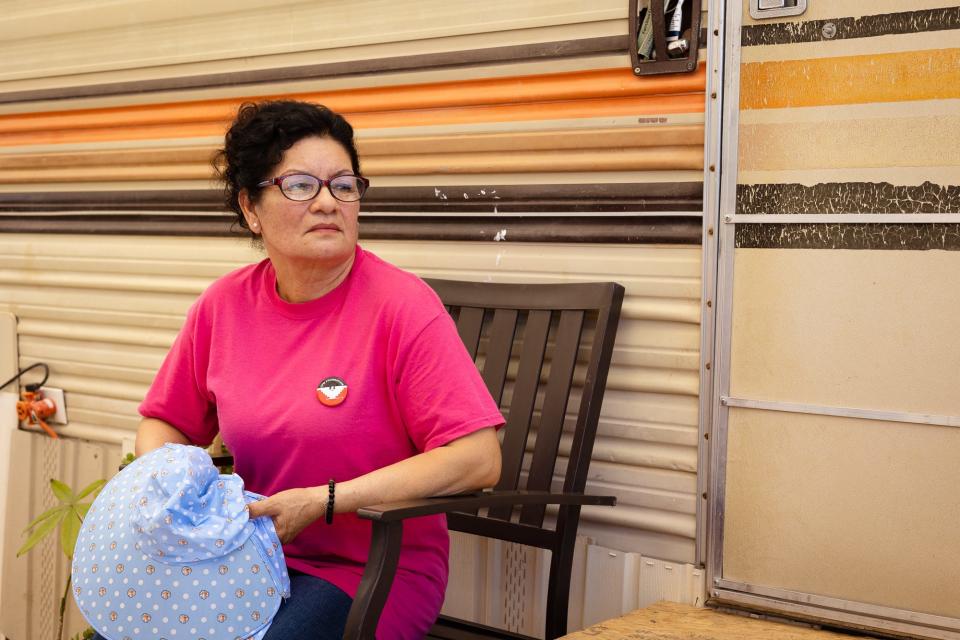
Maria Rosa Vega Murillo works long days as a farmworker in Yuma County, thinning and weeding lettuce crops for $13.50 an hour. Her bus departs San Luis at 5:15 a.m. for the two-hour drive to the fields in Tacna. When she leaves her mobile home for the day, she turns her window air conditioning unit off to save on electricity costs. Her windows are also covered with reflective material to reduce the solar heat coming in.
Sometimes, when she returns, she has to ease into the indoor heat. She sits under an outdoor awning and waits until the sun goes down to take a cold shower. Then she heads to bed around 8 p.m. so she can do it all again the next day.
“You arrive tired,” Murillo said. “You arrive frustrated because of the fast-paced, difficult work and then you’re trying to recover. It takes time.”
And she’s one of the lucky ones. Long lines of Mexican farmworkers queue up daily to cross the border into what is known as America’s winter salad bowl due to its production of leafy greens.
Jose Flores, a community organizer in the Yuma area with the United Farm Workers Foundation, said many of these workers would prefer to cut the commute and live stateside. But despite requirements that employers provide lodging for farmworkers on H2A visas, adequate shelter is scarce. The development that is happening doesn’t match the need or conditions.
According to the state housing agency, of 806 state-subsidized affordable units completed in 2022, zero were located in Yuma County. Instead, a comparison of the American Community Survey 5-year census estimates from 2011 and 2021 show that, in the decade prior, the Yuma metro area added 4,490 single-family detached homes and 1,082 mobile homes. The data suggest a loss of housing stock in every type of more sustainable, heat-resistant structure.
Jennifer Albers, Yuma's assistant director of planning, said a shift in the time of year when census records were collected during the pandemic may have resulted in an undercount in recent estimates of units that house transient farmworkers or snowbirds. But she confirmed that Yuma has struggled to build new multifamily housing, with just 475 units in mid-sized multifamily structures permitted since 2011.
In the opposite corner of the state, residents of 15,000 households on the Hopi and Navajo reservations live in housing that does not have electricity. About a third of those also lack running water.
Still, there’s a shortage of even these types of shelters. In 2021, the Navajo Nation Department of Water Resources estimated that 19,000 homes on the reservation were overcrowded.
Mary Francis is interim executive director with the nonprofit community organization Yee Ha’ólníi Doo, or Navajo Hopi Solidarity, which provides COVID relief and hopes to soon help with home renovation services. During the pandemic, she fielded calls from Native families in need of more space to quarantine when someone contracted the virus.
“In one household in the Fort Defiance agency area, there was a family of 10 that was in a one-bedroom home,” Francis said. “We offered families the option to receive a tent. Of course, that was ideal for the spring or the fall when the weather’s not extreme. There were times when other agencies helped with a hotel stay.”
Francis, a citizen of the Navajo Nation, grew up living part time in a travel trailer. She said her parents, hospitality workers in Page, had trouble securing a home site lease and the funds to build near her grandparents in the Coppermine Chapter area south of Page. Once the paperwork finally went through, they built a shelter on the lot only to have it taken out by a tornado.
Eventually, sick of the crowded conditions, Francis asked her parents if she and her sister could enroll in a federally funded boarding school in Tuba City. The family split, her parents staying with their younger two children near their jobs in Page, 80 miles away.
This is the story of many divided families on the Navajo Nation, which has seen hardly any housing development in the past 40 years. That is, in part, due to a federal building moratorium referred to as the Bennett Freeze, which halted development on 1.5 million acres of Navajo lands in 1966 pending the outcome of a land dispute between the Navajo and Hopi tribes.
The freeze was lifted in 2009, but housing development since has progressed at a crawl. According to the dozen Navajo Nation members interviewed for these stories, the obstacles now are limited family resources, difficult-to-obtain home site leases and slow procedural responses by the Navajo Nation. In 2021, the tribe received nearly $2 billion in economic relief funding through the American Rescue Plan Act but is struggling to disburse it amid what Council Delegate Carl Slater estimates are 2,000 government job vacancies.
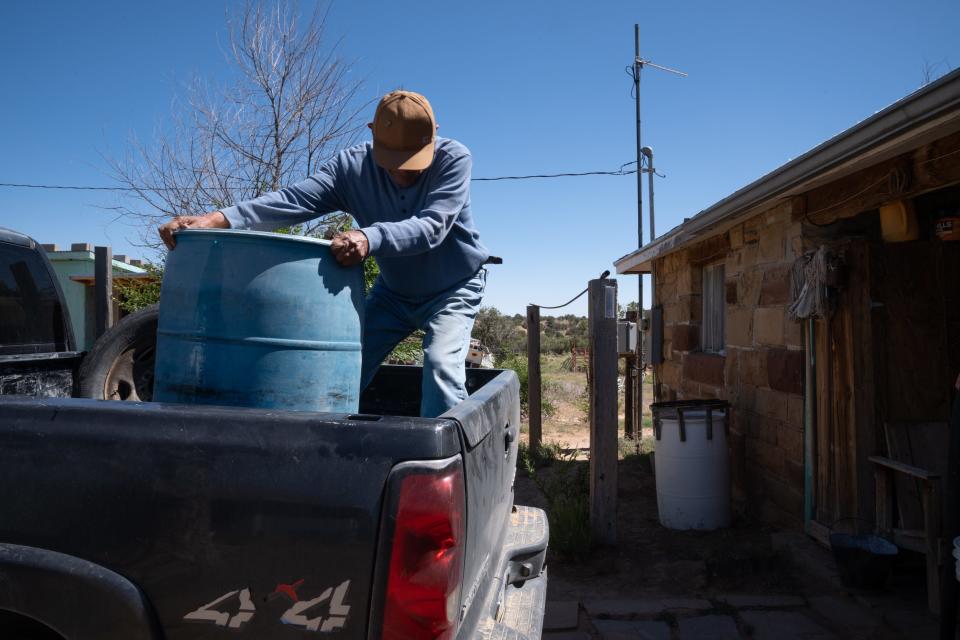
Dorothy Deal's brother Percy Deal is a Navajo Nation elder who shares frustrations over stagnant housing and job development on the reservation and has organized to help connect more homes to water. That effort has stalled, in part, because of a lack of local expertise to complete the survey work.
He knows many young tribal members who go away to pursue an education with the intention of coming back to help their people. Both his son and nephew, Dorothy's son, are engineers who considered moving back home. But in a chicken-egg scenario, a lack of existing housing can dissuade willing workers from moving back to help build housing.
Instead, Deal now holds down his family's plot on Black Mesa by himself, hauling water to his home for washing and drinking in 55-gallon drums every few weeks. At the end of each month, he drives five hours one way to visit his son, daughter, wife and grandchildren in the place where they were able to find jobs and adequate housing, amid the breakneck growth of the Phoenix metropolis.
Julia Arin Cooper contributed to this report.
This story is part of a series by the Arizona Republic on the intersection of the housing and climate crises that has been supported by a journalism fellowship from the MIT Environmental Solutions Initiative and a climate justice grant from the Institute for Journalism and Natural Resources.
Joan Meiners is the climate news and storytelling reporter at The Arizona Republic and azcentral.com. Before becoming a journalist, she completed a doctorate in ecology. Follow Joan on Twitter at @beecycles or email her at joan.meiners@arizonarepublic.com. Read more of her coverage at environment.azcentral.com.
Support climate coverage and local journalism by subscribing to azcentral.com at this link.
This article originally appeared on Arizona Republic: Will Arizona homes withstand future heat extremes?

